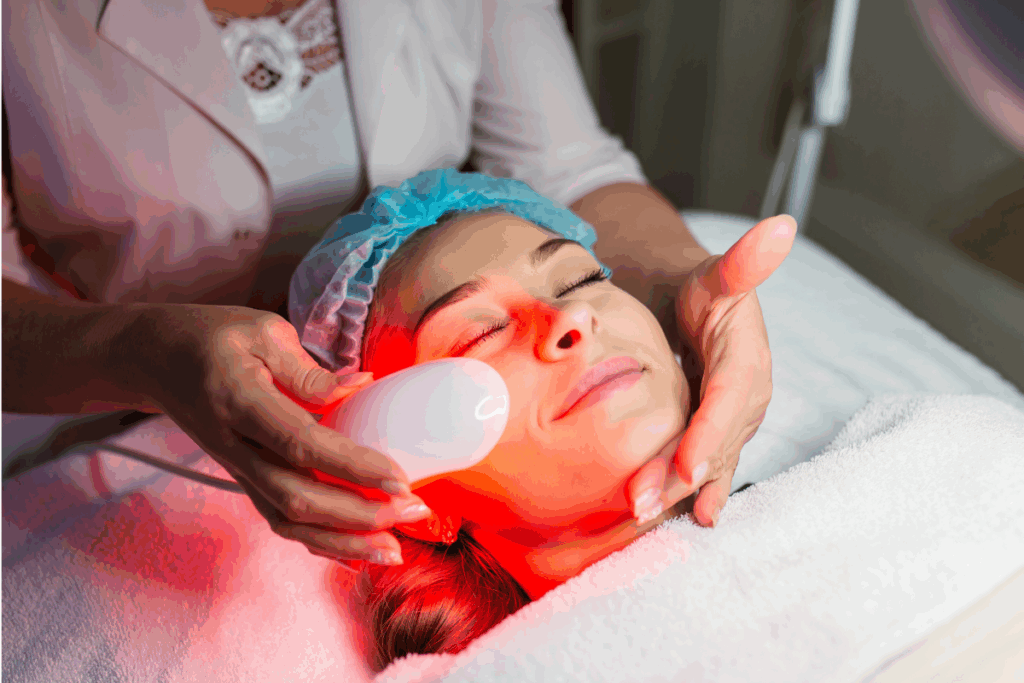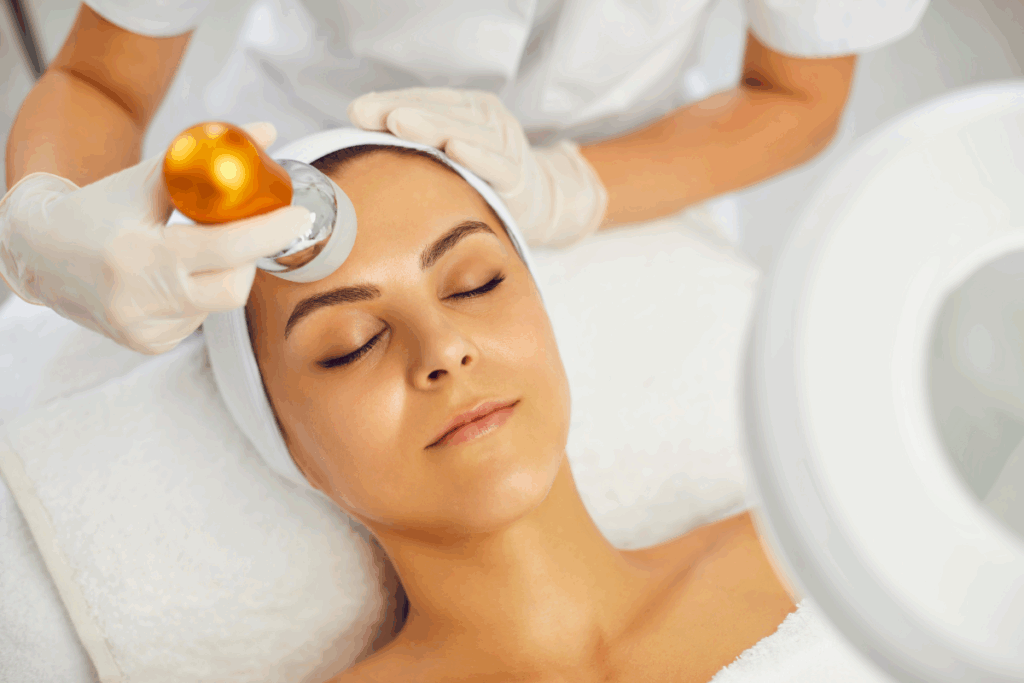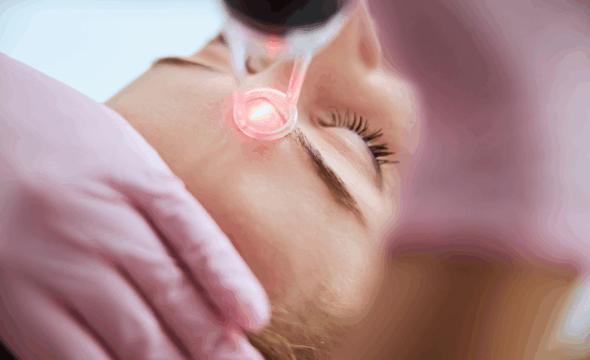Lumecca IPL Photofacial: Brightening Pigmentation Safely
If you’re wondering how to remove dark spots on the face safely without surgery or harsh chemicals, you’re not alone. Many people struggle with patches of discoloration and seek effective solutions. One cutting-edge option is the Lumecca IPL Photofacial, a treatment designed for comprehensive skin rejuvenation. This advanced photofacial has emerged as a popular non-invasive treatment for dark spots and uneven pigmentation. By harnessing intense pulsed light (IPL) energy, Lumecca targets unwanted melanin in the skin to visibly fade dark areas while preserving the surrounding tissue.

Understanding Skin Pigmentation Issues
Skin pigmentation issues occur when melanin is overproduced in certain areas, leading to dark patches or spots. Common forms of hyperpigmentation include sun spots, post-acne marks, and melasma. These concerns are purely cosmetic but can be frustrating and affect one’s confidence. Because they tend to appear on the face and other visible areas, demand is high for effective hyperpigmentation treatment for face blemishes.
Under normal circumstances, dark spots may fade gradually with time and sun avoidance, but many individuals prefer a faster solution. Topical creams, such as hydroquinone or retinol, can help lighten spots over time, and daily sun protection is essential to prevent further worsening. However, when at-home remedies aren’t enough, people often turn to professional pigmentation treatment options to achieve a more even complexion.
Traditional Treatments for Hyperpigmentation
For decades, dermatologists have addressed hyperpigmentation with a range of treatments. Topical prescription creams can gradually lighten dark patches. Chemical peels and microdermabrasion are also used to exfoliate the skin and lift superficial pigment. While these methods can be effective for mild discoloration, deeper or more persistent spots may require stronger interventions.
Laser therapy has long been a gold-standard laser treatment for dark spots and other hyperpigmentation issues. Lasers use concentrated beams of light at specific wavelengths to shatter pigment in the skin. Q-switched lasers target isolated brown spots, and fractional lasers (like Fraxel) resurface broader areas of sun damage by creating micro-columns of treated skin. Laser pigmentation removal procedures can yield significant improvement in dark spots and melasma; however, they often come with some drawbacks. Laser treatments can be aggressive, sometimes requiring downtime for healing and carrying a risk of post-inflammatory hyperpigmentation. Using a laser for hyperpigmentation can be highly effective but may not be suitable for everyone, particularly those with darker complexions or sensitivity to aggressive resurfacing. Furthermore, multiple laser sessions (spaced weeks apart) are usually needed to erase stubborn pigmentation gradually.
These more intensive hyperpigmentation removal methods, while powerful, also increase the importance of proper aftercare to prevent new spots from forming. This is why many patients and practitioners began seeking gentler, yet still effective, technologies to treat discoloration.
What Is IPL and How Does It Work?
IPL stands for Intense Pulsed Light, a technology often referred to as a “photofacial.” Unlike a laser, which emits a single focused wavelength of light, IPL for pigmentation uses a broad spectrum of light wavelengths in each pulse. During an IPL treatment, flashes of intense light are delivered to the skin and absorbed by target chromophores, primarily melanin and hemoglobin. The light energy converts to heat in these pigmented or vascular areas, effectively breaking down the excess melanin or closing off tiny blood vessels. Over the days and weeks after treatment, the body’s natural processes then eliminate the fragmented pigment, causing dark spots to fade in appearance.
An IPL photofacial can treat facial pigmentation with IPL by zeroing in on the color contrast: the device is tuned to wavelengths that are absorbed by browns and reds in the skin. This allows it to selectively damage the unwanted pigmented spots while sparing the surrounding normal skin. IPL is considered a form of IPL skin rejuvenation as well. Not only does it improve pigmentation and redness, but it also stimulates collagen production beneath the surface. Increased collagen can lead to a smoother texture and a subtle reduction in fine lines, giving overall skin tone and quality a boost. Because IPL is non-ablative, meaning it does not vaporize skin layers like some lasers do, it generally entails minimal recovery time. Most people experience only mild redness and warmth after a session, akin to a light sunburn, for a day or two.
Introducing Lumecca IPL Photofacial
Lumecca is a specific brand of intense pulsed light therapy developed by InMode, known for its high-output flashlamp that delivers stronger energy than many standard IPL machines. A Lumecca IPL treatment uses optimized light pulses to penetrate deeper and target pigment more precisely. With up to 3 times more energy in the 500-600 nm range than older IPL devices, Lumecca can address pigmentation issues in fewer sessions. It is often touted as one of the most powerful IPLs for sun damage available, meaning it excels at lifting sun spots, age spots, and freckles caused by UV exposure.
Lumecca’s mechanism is the same IPL principle of selective photothermolysis, but it operates with greater intensity and a specialty cooling handpiece. The sapphire cooling tip on the device helps protect the epidermis from overheating, which not only makes the procedure more comfortable but also further reduces the risk of collateral skin injury. As the broadband light flashes are applied to the skin, patients typically feel only a mild snapping sensation with each pulse. The higher power and enhanced cooling capabilities allow Lumecca to be highly effective in clearing pigmentation while maintaining safety. Lumecca’s advanced IPL can break down excess melanin in pigmented lesions so the body can naturally eliminate them, leading to visible clearing of dark spots. Another advantage of Lumecca IPL is its versatility. It is FDA-approved to treat skin concerns on virtually all areas of the body. While the face, neck, and chest are the most common regions, Lumecca can also be used on the hands, arms, legs, or anywhere you have unwanted pigmentation or redness.

Benefits of Lumecca IPL for Pigmentation
Lumecca IPL Photofacial offers several key benefits for individuals seeking to brighten their complexion and correct uneven pigmentation. As a hyperpigmentation removal treatment, Lumecca has been noted to produce visible improvements. Below are some of the standout benefits of choosing Lumecca IPL for skin tone improvement:
- Effective Skin Tone Correction: Lumecca delivers high-intensity pulses that specifically target brown and red imperfections, leading to significant skin tone correction. Freckles, age spots, and sun damage become lighter and less noticeable, resulting in an overall more even skin tone.
- Fewer Treatment Sessions: Thanks to its optimized energy output, Lumecca often achieves results in fewer sessions than older IPL or specific laser treatments. Many patients need only about 1–3 treatments to reach their desired level of improvement, as opposed to a longer series of treatments with other devices.
- Minimal Downtime: One of the biggest advantages of Lumecca is that it’s non-ablative and gentle on the skin’s surface. There is virtually no downtime – you can resume normal activities the same day. Any redness or mild swelling after a session typically subsides within 24-48 hours. You won’t have significant peeling or prolonged recovery as you might with aggressive laser resurfacing.
- Improvement of Multiple Skin Concerns: While it’s an excellent pigmentation treatment, Lumecca IPL also addresses other complexion issues in the same session. It can reduce telangiectasias (spider veins) and redness (like rosacea) at the same time as it fades brown spots. Additionally, by stimulating collagen, it subtly improves skin texture and can even soften fine lines. This comprehensive approach combines hyperpigmentation removal and rejuvenation.
- Comfort and Safety Enhancements: The device’s built-in cooling (sapphire tip) and precision energy delivery make the experience more comfortable than older light therapies. Most people only feel a snapping or warm sensation. The safety measures reduce the chance of side effects like blistering or unwanted pigment changes when performed by a qualified provider.
Lumecca IPL photofacials provide a powerful yet non-invasive treatment for dark spots and discoloration. You get the benefits of a laser-like result without the same level of pain or recovery time. It’s an attractive option for those with busy lifestyles who can’t afford a lot of downtime but still want to achieve a meaningful improvement in their skin’s appearance.
Safety and Recovery with Lumecca IPL
IPL treatments have been used for years and are considered low-risk when performed by trained professionals. The Lumecca device includes features to maximize safety. Importantly, Lumecca is considered safe for a wide range of skin tones and ethnicities. Its broad spectrum of light can be adjusted to suit one’s natural pigmentation levels, so it avoids causing light spots or other irregularities in skin color. The treatment parameters can be customized, whether you have a lighter complexion or a moderately dark one, making Lumecca more inclusive than some older technologies.
During a Lumecca IPL session, your practitioner will take precautions like providing protective eyewear and cooling the skin. The procedure is generally very tolerable. Often, no numbing cream is required, though a cooling gel is usually applied. After treatment, it’s normal for the targeted spots to appear slightly darker or more pronounced; this means the pigment has responded and will eventually slough off. You may feel as though you have a mild sunburn, characterized by some redness and warmth in the affected area. These acute effects usually fade within a few hours to a day. Any minor swelling tends to resolve in a day or two as well.
Lumecca IPL is widely regarded as a safe procedure with minimal risks. Serious side effects are uncommon, especially when a skilled technician adjusts the settings to your skin. Adverse reactions like burns, blistering, or scarring are rare. In fact, Lumecca IPL’s safety and effectiveness have made it a go-to hyperpigmentation treatment for face discoloration issues in many dermatology and med spa clinics. When proper protocols are followed, patients can confidently undergo Lumecca photofacials knowing that it’s a controlled and refined method to improve their skin with little risk.
Lumecca IPL and Melasma – Special Considerations
Melasma is a form of hyperpigmentation characterized by diffuse, brown or gray-brown patches, often triggered by hormonal changes and sun exposure. It’s commonly seen in women and tends to appear on the cheeks, forehead, or upper lip. Melasma can be particularly stubborn to treat because it has a tendency to recur. When considering the best treatment for melasma on the face, dermatologists often caution that no single procedure is a permanent cure; a combination of therapies and long-term maintenance is usually required.
IPL photofacials like Lumecca can sometimes help melasma by breaking up the pigment temporarily, but they must be used with care. Melasma lies deeper in the skin and is highly sensitive to heat and light. While IPL can produce short-term improvement in melasma patches, the pigmentation often returns within a few months. For this reason, many skin specialists do not use IPL as a first-line melasma therapy, especially not by itself.
That doesn’t mean Lumecca IPL has no role in treating melasma. Instead, it means it should be combined with other approaches for the best results. Typically, melasma management will start with strict sun protection and topical lightening agents like hydroquinone, tranexamic acid, or retinoids to suppress pigment production. If device-based treatments are desired, gentler methods such as low-energy lasers or chemical peels may be employed, as they carry a lower risk of rebound pigmentation. In some cases, a provider might perform a test spot or very light IPL treatment on melasma to measure response, but caution is key. The consensus is that melasma requires ongoing care: even after clearing the pigmentation, maintenance with topical treatments is important to prevent relapse.

When it comes to restoring a clearer and more radiant complexion, there is no one-size-fits-all best treatment for hyperpigmentation. But the Lumecca IPL Photofacial is certainly a standout contender for many common pigmentation concerns. This advanced IPL therapy offers a winning combination: it’s powerful on unwanted pigment yet gentle on the surrounding skin, achieving noticeable improvements in discoloration with minimal hassle for the patient. With Lumecca, years of sun damage, freckles, or redness can be significantly reduced, leading to a more even and youthful skin tone. Equally important, it does so in a safe, controlled manner, with a low risk of complications and virtually no downtime.
Sources
- Mayo Clinic News Network – Mayo Clinic Q&A: Treating melasma newsnetwork.mayoclinic.org







